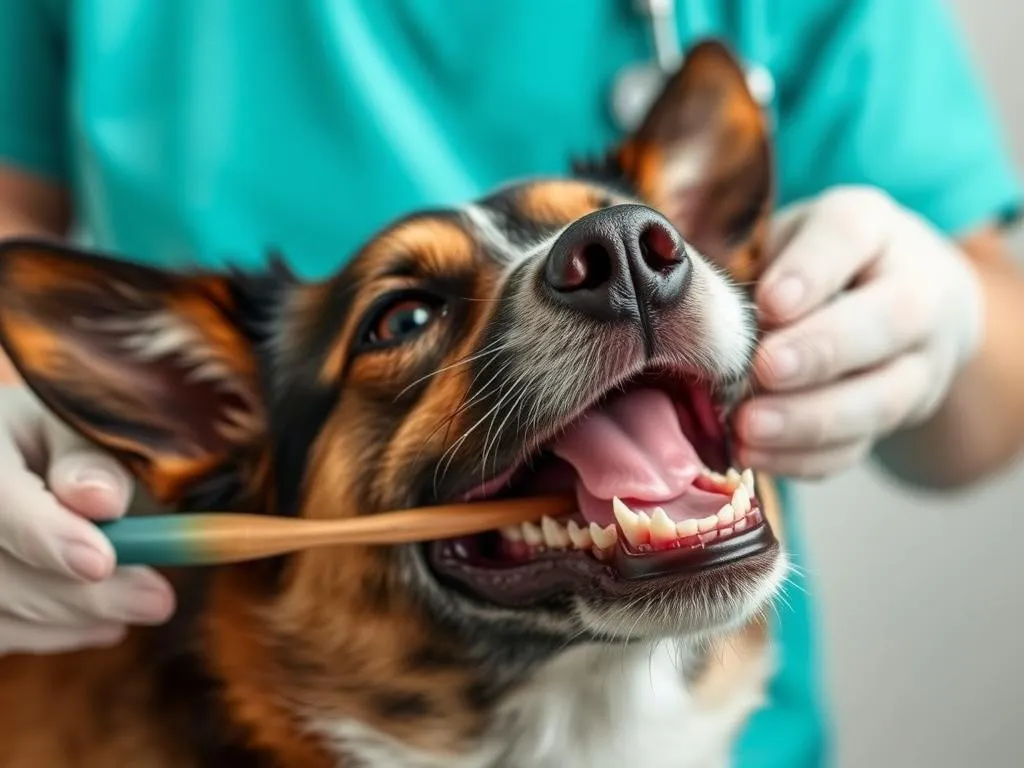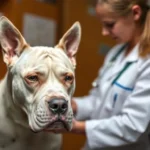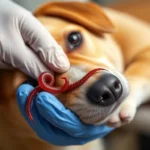
Maintaining your dog’s dental health is crucial for their overall well-being. Many pet owners often wonder, are you supposed to brush your dog’s teeth? This important question highlights a common concern among dog owners about how to best care for their furry friends. In this article, we will delve into the importance of dental care for dogs, the role of brushing, and practical steps to ensure your dog’s mouth stays healthy.
Understanding Canine Dental Health
Importance of Dental Care
Dental health is not just about keeping your dog’s teeth white and clean; it significantly impacts their overall health. Poor dental hygiene can lead to a myriad of health problems, including infections that can affect the heart, liver, and kidneys. In fact, studies indicate that over 80% of dogs show signs of dental disease by the age of three. This statistic underscores the importance of regular dental care in preventing severe health issues.
Untreated dental issues can lead to plaque buildup, tartar, and gum disease, which can cause pain and discomfort for your pet. Additionally, bacteria from the mouth can enter the bloodstream, leading to systemic health problems. Ensuring your dog has good dental hygiene is critical for a long and healthy life.
Common Dental Problems in Dogs
Several dental issues are prevalent among dogs, and being aware of them can help you take proactive measures. Common problems include:
- Tartar Buildup: A hard deposit on teeth that can lead to more severe issues if not addressed.
- Gingivitis: Inflammation of the gums, often characterized by redness and swelling.
- Periodontal Disease: A serious condition that affects the supporting structures of the teeth, potentially leading to tooth loss.
Watch for signs such as bad breath, swollen gums, or difficulty eating, which may indicate that your dog is experiencing dental problems. Early intervention can prevent more serious complications down the line.
The Role of Brushing in Dental Care
Benefits of Brushing Your Dog’s Teeth
Brushing your dog’s teeth is one of the most effective ways to maintain their dental health. Regular brushing helps remove plaque before it can harden into tartar, which is much more difficult to remove. It also helps reduce the risk of gingivitis and periodontal disease.
While dental chews and rinses can complement oral hygiene, they should not replace brushing. These products can help freshen breath and reduce plaque, but they are not as effective as brushing when it comes to preventing dental diseases.
Vet Recommendations on Brushing Frequency
Veterinarians generally recommend brushing your dog’s teeth at least two to three times a week, although daily brushing is ideal for optimal health. Starting a dental care routine early in your dog’s life can help them become accustomed to the process. If you have a puppy, begin brushing their teeth as soon as they start teething, usually around six months of age.
How to Brush Your Dog’s Teeth
Choosing the Right Tools
To effectively brush your dog’s teeth, it is vital to use the right tools. Opt for a dog toothbrush designed with soft bristles and a shape that fits comfortably in your dog’s mouth. Additionally, always use dog toothpaste, which is specifically formulated for canine dental care. Human toothpaste can be harmful to dogs due to ingredients like xylitol and fluoride.
Step-by-Step Guide to Brushing
- Get Your Dog Comfortable: Start by letting your dog sniff the toothbrush and toothpaste, allowing them to get familiar with the tools.
- Introduce the Process: Gradually lift your dog’s lip to expose their teeth and gums. Gently rub the toothbrush along their teeth to acclimate them to the sensation.
- Techniques for Effective Brushing: Use a circular motion to brush the teeth, focusing on the outer surfaces where plaque tends to accumulate. Aim for 30 seconds on each side.
- Make It a Positive Experience: Reward your dog with praise or a treat after brushing to create a positive association with the process.
What to Avoid When Brushing
There are several common mistakes dog owners make when brushing their dog’s teeth. Avoid using human toothpaste, as it can be toxic. Additionally, don’t force your dog to comply; if they resist, take a break and try again later. It’s better to build a positive experience rather than create anxiety around dental care.
Alternative Dental Care Options
Dental Chews and Treats
Dental chews can be a helpful addition to your dog’s dental care routine. They are designed to promote chewing, which can help reduce plaque and tartar buildup. Look for products that are vet-approved and have the Veterinary Oral Health Council (VOHC) seal of approval, indicating they have been tested for effectiveness.
Professional Dental Cleanings
Even with regular brushing, dogs can still develop dental issues. It’s essential to schedule professional dental cleanings with your veterinarian, typically once a year or as recommended based on your dog’s dental health. During a professional cleaning, your vet will perform a thorough examination and cleaning under anesthesia, allowing access to areas that are difficult to reach at home.
Home Dental Care Products
In addition to brushing, several home dental care products can help maintain your dog’s oral hygiene. Rinses and gels can be effective in reducing plaque and freshening breath. However, always consult with your veterinarian before introducing new products into your dog’s dental care routine to ensure they are safe and appropriate.
Signs Your Dog Needs Dental Attention
Recognizing Dental Issues
Being vigilant about your dog’s oral health can help you catch problems early. Signs that may indicate your dog needs dental care include:
- Persistent Bad Breath: While some dog odor is normal, a strong, unpleasant smell can indicate underlying issues.
- Bleeding Gums: Healthy gums should be pink; red or bleeding gums are a cause for concern.
- Difficulty Eating: If your dog shows reluctance or difficulty when eating, it could signal dental pain.
- Loose Teeth: Noticeable mobility or loss of teeth warrants immediate veterinary attention.
When to Consult Your Veterinarian
If you notice any of the above signs or if you are concerned about your dog’s dental health, consult your veterinarian promptly. Regular check-ups are crucial for early detection of dental issues, and your vet can provide tailored recommendations for your dog’s dental care.
Conclusion
Maintaining your dog’s dental health is essential for their overall well-being. Regular brushing is a cornerstone of good dental hygiene, helping prevent serious health issues down the line. It’s important to establish a dental care routine that includes brushing, professional cleanings, and potentially the use of dental chews or rinses. By actively caring for your dog’s teeth, you can help ensure they live a longer, healthier life.
Frequently Asked Questions
Can I use human toothpaste on my dog?
No, human toothpaste contains ingredients that can be harmful to dogs. Always use toothpaste specifically formulated for dogs.
How can I tell if my dog’s teeth are clean?
Clean teeth should appear white with minimal plaque or tartar buildup. Gums should be pink and not swollen or bleeding.
What if my dog doesn’t like having their teeth brushed?
Introduce brushing gradually and use positive reinforcement to make it a pleasant experience. If your dog continues to resist, consult your vet for alternative dental care options.









